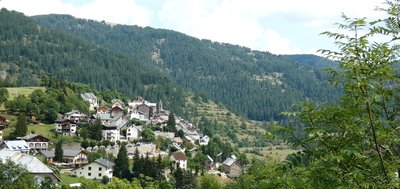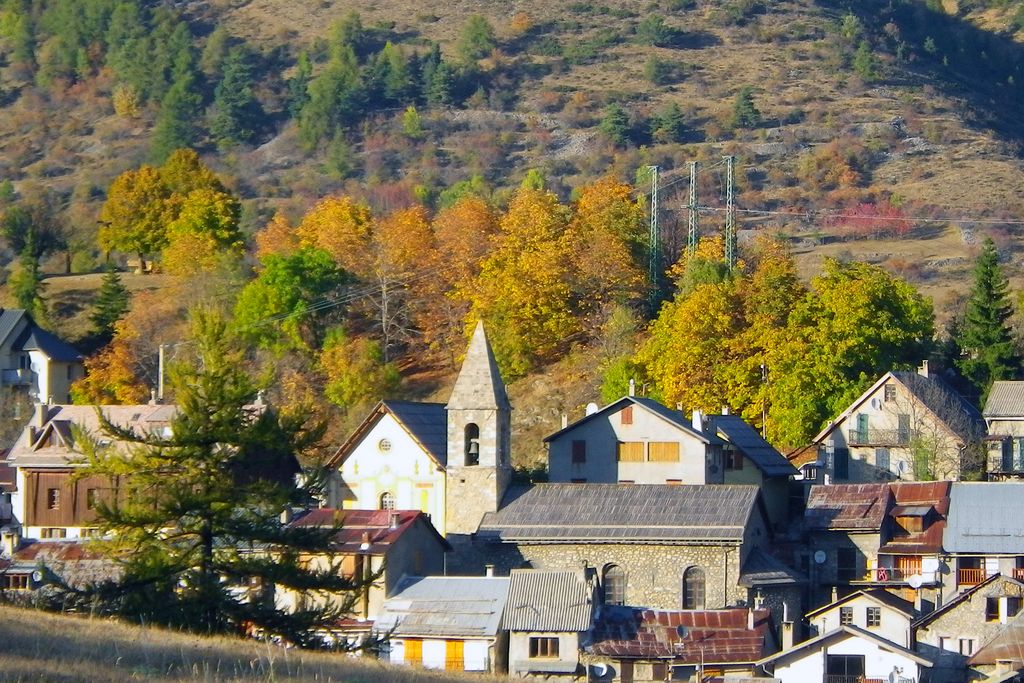
The village of Beuil
10 points of interest
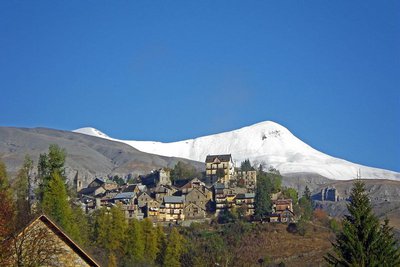
Titre Le village de Beuil et le mont Mounier enneigé en automne - COSSA Jean-Louis  History and historical trail
History and historical trailThe glory days...
…of the ski jumping hill are long gone; it is still there though and has been since 10th March 1930, the day of its fabulous inauguration. For the occasion, a competition was organised: the French Olympic team with its champion from Chamonix, Martial Payot, the Norwegians Olé Bohn and Emil Petersen and the Swiss Lulernauer all took part. The French competitors all achieved jumps of between 30 and 50 metres.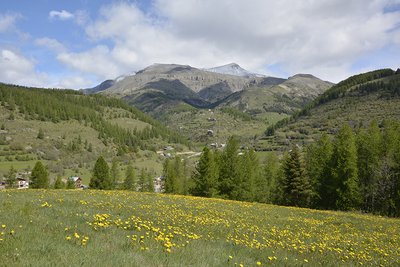
Le Pré de Foire, Beuil - Leslie AMIEL  History and historical trail
History and historical trailThe field which hosts the fair
Since the 16th century, herds and flocks have been brought here, sheep in particular. It was an opportunity to do good business: butchers and dealers came from as far away as the coast to meet the farmers and breeders and after tough negotiations, when the deal had been made, they sat down at a table in one of the cafés for whom those days were among the most lucrative.
These exchanges also embodied the links between the valleys of Var, Tinée and Roudoule.
Lower down, you can see La Condamine, land reserved for the local lord which has subsequently divided up; each plot was valuable because the was close to the village and received plenty of sunshine, making it an ideal place to grow wheat, potatoes and the famous lentils.
Des vestiges de l'ancien château mediéval de Beuil - Jean-Louis COSSA  History and historical trail
History and historical trailThe outline of the castle
...can only be imagined by each of us: we can pick out, behind the alinement of the cut stone, the thickness of the wall made of rough blocks and held together by white mortar.
On 26th May 1581, Honoré II of the house of Grimaldi, loyal to the Duke of Savoie, obtained the title of Count of Beuil, with important duties in Nice. His son did not follow his example: “I am Count of Beuil, I can do what I want”. Thus did Annibal set the tone. Devoted, rebellious, provocative and then a traitor, he tested the patience of the Duke who had him arrested, judged and executed in 1621, putting an end to the greatest Manor in the Comté de Nice.
The castle of Beuil was demolished. From 1633 onwards, its beautiful stones were used in the village as cornerstones, lintels and window frames.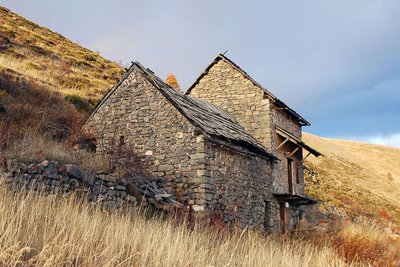
Habitat isolé à Beuil. - COSSA Jean-Louis  History and historical trail
History and historical trailThe old village houses
At the highest of these houses, resolutely facing the south, are small covered balconies which were used for drying fruit. The dwellings formed a barrier against brigands and wolves. Any spaces between the houses were closed off with walls, which, once the village was secure, gave rise to zigzagging stairways. Down below are the gardens (“horts” from the Latin hortus), where the vegetables which were so precious to the village grew, mosaics of plots facing due south until the foot of the promontory. Like all such areas today, the gardens are partly abandoned and have been invaded by shrubs and bushes.
Vieille porte dans un habitat traditionnel en bois de mélèze à Beuil, hameau des Launes. - Marc EVENOT  Architecture
ArchitectureTraditional house, renovated and genuine clad roof
In the past, the villagers used larch planks for the roofs of their houses, a fine choice of material given that it is waterproof, long-lasting and aesthetically pleasing, because even without treatment the shingles take on a silver-grey hue.
It has to be dried for three to five years and two grooves need to be cut into it so that rainwater will run off the roof. Then, the two metre planks have to be offset so that water does not leak through the joints.
Today, people often put corrugated iron for the first layer and then a single layer of planks on top for aesthetic reasons: this is false cladding.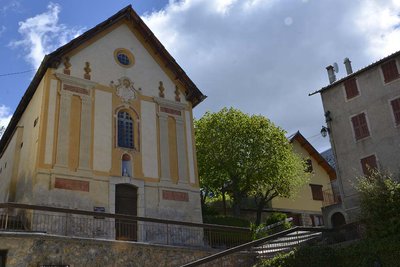
La Chapelle des pénitents, Beuil - leslie.amiel  History and historical trail
History and historical trailChapelle des pénitents
Dedicated to Our Lady of Mercy, the chapel was restored in 1630 and was used and maintained by the “venerable confraternity” which “assembled every Sunday and Bank Holiday to sing the office of Mary”. The confraternity, made up of lay people united in the aim of mutual assistance, also played another original role here: the Mont Granatique collectors were named as members of it. This stock of seeds was bought in the autumn thanks to legacies from private individuals, conserved in the barn located above the chapel and then handed out in the form of virtually interest-free loans.
The chapel was abandoned for a long time after the confraternity came to an end, but today it has heritage status. It has a larch shingle roof, a trompe-l'oeil facade which was restored by Guy Ceppa in 1984 on which there is a sundial with the motto “soli honor et Gloria” (honour and glory to God alone).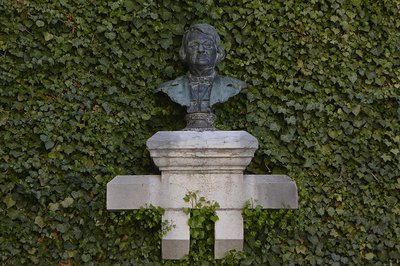
Le buste de Joseph Garnier, Beuil - Jean-Louis COSSA  History and historical trail
History and historical trailThe bust of Joseph Garnier
This bust stands where the house where he was born, which was demolished in 1938 to free up space around the church, used to be. Born in 1813, this liberal economic theorist was in Paris during the revolutionary days in 1830, when he demonstrated with Republican students. In 1870, he was also present for the terrible months of the Paris Commune. Elected as a senator for Alpes Maritimes in 1876, he was responsible for the opening of the de la route des Gorges du Cians road in 1893, an event which he didn’t see as he died in 1881.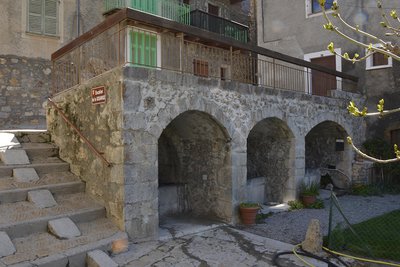
Les lavoirs de Beuil - Leslie AMIEL  History and historical trail
History and historical trailThe wash house
The Beuil wash house has the singularity of being split into three arched sections.
Here, the water supply was problematic for a long time and this was only resolved in the 1900s. Houses were supplied with running water later on and, in many families, carrying water remained a chore until the 1950s: washing day was on Thursday, when there was no school, meaning that there were plenty of hands to help out.
Notre Dame du Rosaire, Beuil - Leslie AMIEL  History and historical trail
History and historical trailNotre Dame du Rosaire
Initially a chapel, it only became a parish church in 1794, the year when a fire destroyed the church of St Jean-Baptiste which was in the cemetery on the edge of the La Condamine. The people of Beuil chose this imposing late-Gothic chapel for their patron saint; its bell tower shows that Romanesque Lombard architecture still survived into the 16th century. The loggia on the facade dates from after the war and adds to its overall composite character. Inside, the baroque decoration gives it warmth and a fantastical element. The painting of the rosary with the statue of John the Baptist standing over it indicated that the church is devoted to two figures.
Linteau Lois Serre, Beuil - Leslie AMIEL  History and historical trail
History and historical trailMysterious black stone
Dated August 1523, this sculpted lintel carries the name of the Loïs Serre armouries, canon of Clans, who was the personal secretary to Honoré I, Baron of Beuil.
Was it being reused (recovered from the castle, for instance) or was it an original element. It is impossible to be sure if Loïs Serre really lived at this location in the village. On the other hand, his prestige was so great in Beuil and in the stronghold that the Baron, who was often retained in Nice, delegated his powers to Serres.
Thus we find his armouries in Clans and he is represented as a donor for a mural in 1513 at Roubion.
Description
- Departure : Place Charles de Gaulle
- Arrival : Place Charles de Gaulle
- Towns crossed : Beuil
Altimetric profile
Recommandations
Information desks
Office du tourisme de Beuil
1 rue du Comté de Beuil, 06470 Beuil
Transport
Access and parking
Beuil is located 80km from Nice (an hour and fifteen minutes’ drive).
Take the A8 motorway –exit Nice-St Isidore then RD 6202. Follow directions for Digne, then Touët sur Var, take the D28 via the Cians gorges or the D2202 via the Daluis gorges and Guillaumes.At the entrance to the village, at the junction, go onto Boulevard Marcel Pourchier.
200m along on the right, park your vehicle at Place Charles de Gaulle;
You can reach the play area via a series of stairways.
Parking :
More information
Report a problem or an error
If you have found an error on this page or if you have noticed any problems during your hike, please report them to us here:
Close by1
- Information site

